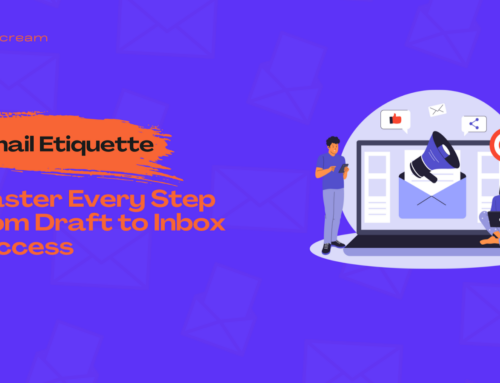AI models transform businesses by automating tasks, making accurate predictions, and delivering valuable insights. These systems, powered by machine learning, rely on data to learn and perform effectively.
However, the quality of outcomes hinges on how well and accurately you feed your AI Models.
It’s because high-quality data ensures that Artificial intelligence systems produce reliable insights and actionable results.
As a business, you must understand the importance of preparing and optimising data to maximise your AI’s potential. So, to help you feed AI well, we discuss a few tips in this article to create measurable business impact.
Understanding the Basics of AI Model Feeding
Feeding your AI model involves providing the data to learn and make predictions. This data is the foundation for training, testing, and refining its ability to recognize patterns and solve problems. Without quality data, artificial intelligence cannot function optimally.
Types of AI Models and Their Needs
- Supervised Learning Models: Require labeled datasets to map inputs to desired outputs.
- Unsupervised Learning Models: Use unstructured data to identify patterns without labels.
- Reinforcement Learning Models: Learn by interacting with an environment and receiving feedback.
Each model type has unique data requirements. Tailoring the data to these needs ensures that the model performs its intended tasks efficiently.
The Role of High-Quality Data
High-quality data is accurate, relevant, consistent, and complete. For example, if a business uses artificial intelligence for customer segmentation, it must provide accurate demographic and purchase data to avoid misleading results. On the other hand, low-quality data can lead to costly errors and losses, much like how thorough preparation with Microsoft AZ-400: Practice Test Dumps can help you avoid costly mistakes in certification exams.
How to Source Quality Data
Internal data, such as customer databases or sales records, is a valuable starting point as it reflects your business’s unique needs. Third-party providers can also supply tailored datasets that align with specific objectives, offering ready-to-use information to supplement internal sources.
However, for many businesses, web scraping has become an increasingly popular method of gathering data. By using solutions such as web scraper API, businesses can efficiently extract high-quality, up-to-date information from websites. These services streamline the process of collecting structured data, eliminating the need for manual effort. As a result, they have become indispensable for developing models that rely on accurate and diverse datasets.
Preprocessing: Preparing Your Data
Effective preprocessing is essential to ensure your data is ready for training the artificial intelligence models. Properly prepared data minimizes errors, enhances accuracy, and ensures seamless compatibility with AI algorithms. Below are key steps to consider during the preprocessing stage:
Data Cleaning
Before feeding your AI, it’s critical to clean the data thoroughly. This involves removing duplicates, handling missing values, and resolving inconsistencies within the dataset.
For instance, ensuring uniform formats for dates or standardizing categorical entries (like “yes” and “Y”) can significantly improve data reliability. Clean data ensures the AI processes accurate inputs, reducing the risk of errors that could lead to faulty outcomes or skewed predictions.
Labeling and Annotation
Accurate labeling is crucial for supervised learning models to function effectively. For example, when training an AI to recognize images of products, each image must be clearly labeled (e.g., “heater,” “barn fans,” or “water pump”).
Inaccurate or inconsistent labeling can confuse the AI, leading to poor performance and incorrect predictions. Investing in detailed and consistent annotation ensures that your model learns the intended patterns and delivers precise results.
How to Feed Your AI Models Effectively
Only having the right data does not suffice; you have to feed it effectively to ensure maximum results. You can do it by:
-
Ensuring Data Diversity
A diverse dataset ensures the model learns from a wide range of examples, leading to more accurate and fair outcomes. For instance, a model designed for hiring decisions should include data representing various demographics.
These include gender, ethnicity, and age groups to prevent discriminatory outcomes. Without diversity, it may inadvertently favor one group over others, reducing its effectiveness and fairness, can ensure you approach tasks with a well-rounded understanding.
-
Choosing the Right Volume of Data
Finding the right balance in data volume is crucial for effective artificial intelligence training. These models need enough data to identify patterns and make accurate predictions, but too much data can overwhelm the system and slow down training.
Therefore, you must start with a balanced dataset, providing a strong learning foundation. You can gradually increase the dataset size to improve accuracy without overloading the system.
-
Use Balanced Data
Balanced data is critical for training models to produce reliable and unbiased results. When datasets heavily favor one category over another, the model may become skewed, making it less effective in real-world applications.
For example, when training an AI for sentiment analysis, including equal representation of positive, negative, and neutral sentiments ensures the model learns to recognize all types of emotions accurately.
Without balance, it might over-predict the dominant sentiment in the dataset, leading to unreliable conclusions.
Conclusion
Knowing how to feed your AI models with quality data is key to maximizing business impact. By sourcing, preprocessing, and accurate feeding, you ensure optimal performance. In addition, you should continually monitor and improve the ad’s performance as required. So, optimize your AI feeding process today to unlock its full potential and drive results.


